#Most popular CSS frameworks
Explore tagged Tumblr posts
Text
#Best CSS frameworks for developers#CSS frameworks for modern web apps#CSS frameworks for responsive design#Modern CSS frameworks 2025#Most popular CSS frameworks#Top CSS frameworks 2025#Top frontend frameworks 2025
0 notes
Text
My Journey to Becoming a Frontend Developer
In today’s fast paced digital world, frontend development has become the cornerstone of delivering exceptional user experiences. From seamless web app navigation to visually stunning interfaces, a frontend developer brings ideas to life.
Why I Want to Be a Frontend Developer and How HNG Will Help Me Achieve My Goals
My journey to becoming a frontend developer is fueled by a passion for creativity, problem solving, and the desire to create applications that users love. Joining HNG internship bootcamp as a frontend developer is the perfect opportunity to sharpen my skills and gain hands on experience while contributing to real world applications.
My Motivation for Becoming a Frontend Developer
Ever since I first interacted with web technologies, I’ve been fascinated by the magic of turning code into functional and beautiful interfaces. It’s amazing how a few lines of HTML, CSS, and JavaScript can create immersive websites and applications that millions of people rely on daily.
Another reason I gravitate toward frontend development is its user centric nature. I love the idea of creating intuitive and visually appealing designs that make people’s lives easier. I’m driven by the opportunity to make technology accessible and enjoyable for everyone.
How HNG Will Help Me Grow in the Field
The HNG internship bootcamp is a game changer for aspiring developers like me. One of the most significant challenges in the tech world is bridging the gap between theoretical knowledge and real world application. HNG provides the perfect platform to tackle this by immersing participants in a fast paced, project driven environment.
Here’s how I believe HNG will accelerate my growth:
Hands On Experience: HNG’s focus on building real life applications aligns perfectly with my goal to learn by doing. By collaborating with a team to tackle real world challenges, I will develop technical skills that can’t be learned in isolation.
Mentorship and Guidance: HNG’s experienced mentors will provide valuable insights and feedback, helping me refine my coding skills, improve my design thinking, and understand industry best practices.
Exposure to Modern Tools and Frameworks: The bootcamp emphasizes modern frontend technologies. This aligns with my goal of mastering the tools that drive innovation in the industry.
Networking Opportunities: Being part of a vibrant community of like minded developers and industry experts at HNG will expand my professional network and open doors for future opportunities.
My Goals for the Internship and How I Plan to Achieve Them
During my time at HNG, my primary goal is to become a finalist in the frontend track and I plan to achieve this through other key goals such as:
Master Frontend Fundamentals: I aim to strengthen my knowledge of HTML, CSS, JavaScript, and popular libraries like React. I plan to achieve this by actively participating in all coding sessions and tasks, seeking feedback, and consistently practicing.
Contribute to Real World Projects: One of my key goals is to contribute meaningfully to the applications we build at HNG. By collaborating with team mates, meeting deadlines, and embracing challenges, I hope to add value to every project as I move up the ladder.
Enhance Problem Solving Skills: Frontend development often involves debugging and optimizing code. I will approach every challenge as an opportunity to learn and improve my critical thinking.
Develop a Strong Portfolio: By the end of the internship, I want to have a portfolio showcasing my contributions to real world applications, demonstrating my skills to potential employers that require the service of an experienced JavaScript and React developer.
Conclusion
Becoming a frontend developer is not just a career choice for me, it’s a passion that aligns with my creative and technical interests. The HNG internship bootcamp provides a unique opportunity to accelerate my growth, gain hands on experience, and prepare for the dynamic world of frontend development. With a clear vision of my goals and a commitment to learning, I’m excited to embark on this journey and make the most of this incredible opportunity at HNG.
3 notes
·
View notes
Text
JavaScript
Introduction to JavaScript Basics
JavaScript (JS) is one of the core technologies of the web, alongside HTML and CSS. It is a powerful, lightweight, and versatile scripting language that allows developers to create interactive and dynamic content on web pages. Whether you're a beginner or someone brushing up on their knowledge, understanding the basics of JavaScript is essential for modern web development.
What is JavaScript?
JavaScript is a client-side scripting language, meaning it is primarily executed in the user's web browser without needing a server. It's also used as a server-side language through platforms like Node.js. JavaScript enables developers to implement complex features such as real-time updates, interactive forms, and animations.
Key Features of JavaScript
Interactivity: JavaScript adds life to web pages by enabling interactivity, such as buttons, forms, and animations.
Versatility: It works on almost every platform and is compatible with most modern browsers.
Asynchronous Programming: JavaScript handles tasks like fetching data from servers without reloading a web page.
Extensive Libraries and Frameworks: Frameworks like React, Angular, and Vue make it even more powerful.
JavaScript Basics You Should Know
1. Variables
Variables store data that can be used and manipulated later. In JavaScript, there are three ways to declare variables:
var (old way, avoid using in modern JS)
let (block-scoped variable)
const (constant variable that cannot be reassigned)
Example:
javascript
Copy code
let name = "John"; // can be reassigned const age = 25; // cannot be reassigned
2. Data Types
JavaScript supports several data types:
String: Text data (e.g., "Hello, World!")
Number: Numeric values (e.g., 123, 3.14)
Boolean: True or false values (true, false)
Object: Complex data (e.g., { key: "value" })
Array: List of items (e.g., [1, 2, 3])
Undefined: A variable declared but not assigned a value
Null: Intentional absence of value
Example:
javascript
Copy code
let isLoggedIn = true; // Boolean let items = ["Apple", "Banana", "Cherry"]; // Array
3. Functions
Functions are reusable blocks of code that perform a task.
Example:
javascript
Copy code
function greet(name) { return `Hello, ${name}!`; } console.log(greet("Alice")); // Output: Hello, Alice!
4. Control Structures
JavaScript supports conditions and loops to control program flow:
If-Else Statements:
javascript
Copy code
if (age > 18) { console.log("You are an adult."); } else { console.log("You are a minor."); }
Loops:
javascript
Copy code
for (let i = 0; i < 5; i++) { console.log(i); }
5. DOM Manipulation
JavaScript can interact with and modify the Document Object Model (DOM), which represents the structure of a web page.
Example:
javascript
Copy code
document.getElementById("btn").addEventListener("click", () => { alert("Button clicked!"); });
Visit 1
mysite
Conclusion
JavaScript is an essential skill for web developers. By mastering its basics, you can create dynamic and interactive websites that provide an excellent user experience. As you progress, you can explore advanced concepts like asynchronous programming, object-oriented design, and popular JavaScript frameworks. Keep practicing, and you'll unlock the true power of JavaScript!
2 notes
·
View notes
Text
Frontend Technologies (React.js and Angular.js)
Ever since the advent of the world wide web, technologies have been researched and created to streamline the creation of Web pages that are displayed to a client upon the client's request. These web pages began by being static and non-interactive with the use of basic HTML and CSS. After awhile, the Javascript programming language stormed the world of web applications and brought a layer of interactivity, finesse, and dynamism to web applications. Since then, more technologies, most of which are built on the basic initial technologies, have come out. Two of the most popular and effective technologies are React.js and Angular.js. In this article, an attempt would be made to highlight the differences in these technologies and what makes them unique and powerful.
Firstly, React.js is built on Javascript and produced and managed by Meta while Angular is also built on TypeScript but it was produced and managed by Google.
React is a Javascript library while Angular is a framework.
React makes use of a "templating langauge" called JSX to extend Javascript into HTML and it is rendered in the server side while Angular extends the functionality of HTML by adding more attributes like "ng-bind" and it is client side rendered.
React works by using a virtual DOM, while Angular uses the real DOM.
React is a highly scalable library because of the reusability of its components while Angular is less Highly scalable.
Having itemised these differences, they each have their strengths and what makes developers prefer one over the other. React has support for mobile App development, reusability and predictability of code, one can learn it really fast Etc. Angular has faster server side rendering, fewer lines of code, takes time to learn, Etc.
I specifically prefer React to Angular which is why I am glad that React is being used in the HNG internship https://hng.tech/internship where I am currently interning. I have used React to build highly interactive web applications and look forward to honing my skills better as I use it for more daunting projects in the HNG internship. Check out HNG on their website https://hng.tech/premium
2 notes
·
View notes
Text
Top 10 Front-End Frameworks and Libraries for 2024
As the web development landscape continues to evolve, staying updated with the latest front-end frameworks and libraries is crucial for any developer. Whether you're a seasoned pro or just starting out, knowing which tools to use can significantly impact your productivity and the quality of your projects. In this post, we’ll explore the top 10 front-end frameworks and libraries that are set to dominate in 2024.
1. React
React remains one of the most popular front-end libraries, known for its simplicity and flexibility.
Key Features of React
Component-Based Architecture: Reusable components make development efficient and manageable.
Virtual DOM: Enhances performance by minimizing direct DOM manipulation.
Strong Community Support: A vast ecosystem of tools, libraries, and tutorials.
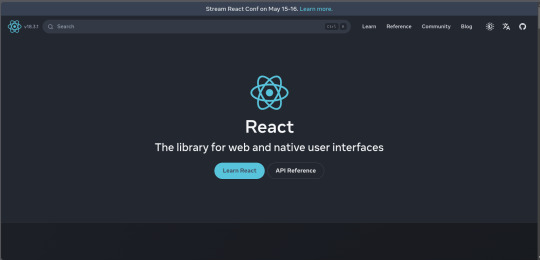
2. Angular
Angular, backed by Google, is a powerful framework for building dynamic single-page applications (SPAs).
Why Choose Angular?
Two-Way Data Binding: Synchronizes data between the model and the view.
Dependency Injection: Improves code maintainability and testability.
Comprehensive Documentation: Extensive resources for learning and troubleshooting.
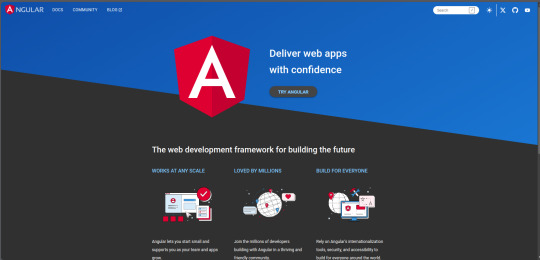
3. Vue.js
Vue.js has gained popularity due to its gentle learning curve and versatility.
Advantages of Vue.js
Reactive Data Binding: Simplifies state management.
Single-File Components: Encapsulate HTML, CSS, and JavaScript in one file.
Flexibility: Can be used for both large-scale and small-scale applications.
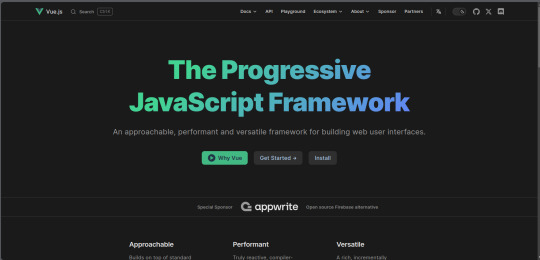
4. Svelte
Svelte is a relatively new player that compiles components into highly efficient vanilla JavaScript at build time.
Svelte’s Standout Features
No Virtual DOM: Directly manipulates the DOM for better performance.
Less Boilerplate: Cleaner code with minimal overhead.
Ease of Use: Intuitive and straightforward syntax.
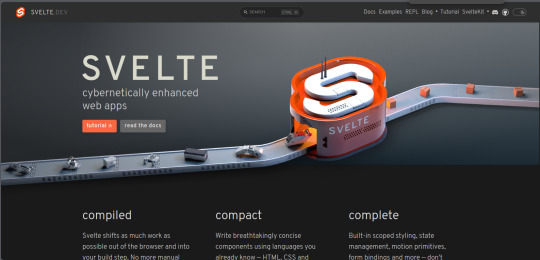
5. Bootstrap
Bootstrap is a front-end framework that provides pre-designed components and a responsive grid system.
Benefits of Using Bootstrap
Responsive Design: Ensures your site looks great on all devices.
Pre-Styled Components: Saves time with ready-to-use UI elements.
Customizable: Easily customize with Sass variables and Bootstrap’s extensive options.
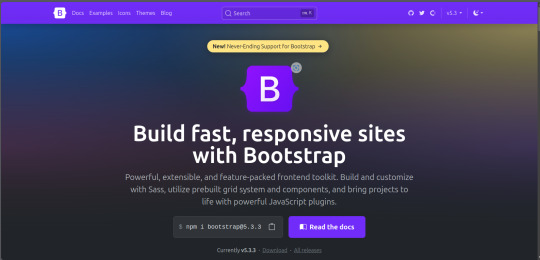
6. Tailwind CSS
Tailwind CSS is a utility-first CSS framework that allows for rapid UI development.
Tailwind CSS Features
Utility-First Approach: Use utility classes directly in your HTML.
Customizable: Extensive configuration options to suit your project’s needs.
Consistency: Enforces a consistent design language across your project.
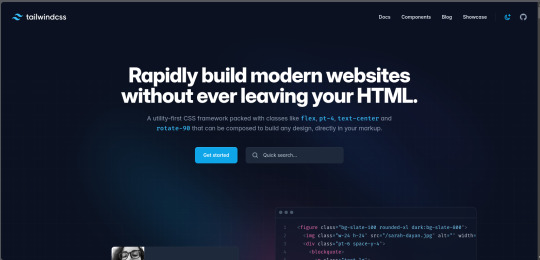
7. Ember.js
Ember.js is a robust framework for building ambitious web applications.
Why Ember.js Stands Out
Convention over Configuration: Reduces the amount of decision-making and boilerplate code.
Strong Routing: Powerful routing capabilities for managing application state.
Productivity: Focuses on developer productivity with built-in best practices.
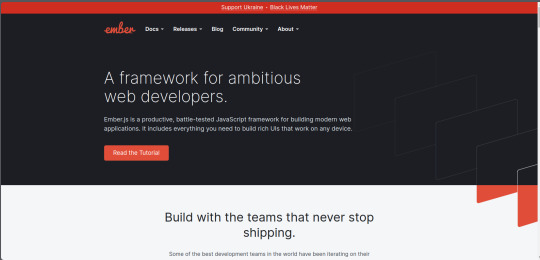
8. Alpine.js
Alpine.js offers a minimal and lightweight way to add interactivity to your websites.
Key Features of Alpine.js
Lightweight: Small footprint with only a few kilobytes.
Declarative Syntax: Similar to Vue.js, making it easy to understand and implement.
Ease of Integration: Can be easily integrated into existing projects.
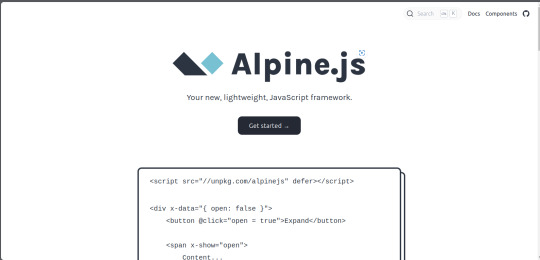
9. Next.js
Next.js is a popular React framework that enables server-side rendering and static site generation.
Benefits of Using Next.js
Server-Side Rendering (SSR): Improves performance and SEO by rendering pages on the server.
Static Site Generation (SSG): Pre-renders pages at build time for fast load times.
API Routes: Allows you to create API endpoints within your application.
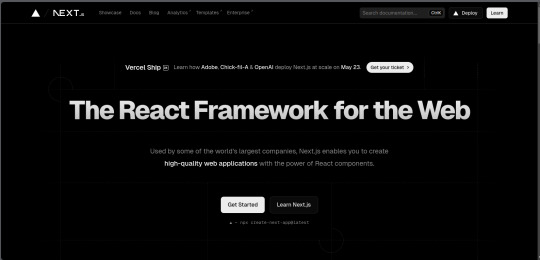
10. Lit
Lit is a simple library for building fast, lightweight web components.
Advantages of Lit
Web Components: Embraces the web components standard for reusable, encapsulated HTML elements.
Performance: Lightweight and highly performant.
Simple API: Easy to learn and use with a minimal API surface.
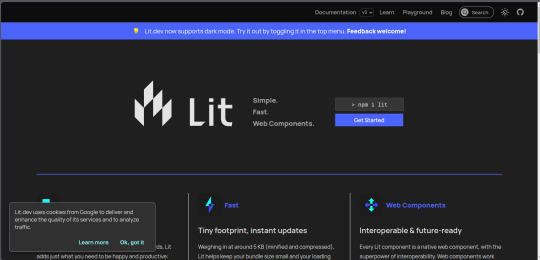
Conclusion
Choosing the right front-end framework or library can significantly impact your workflow and the quality of your projects. Whether you prefer the flexibility of React, the structure of Angular, or the simplicity of Svelte, there's a tool out there to suit your needs.
Final Tips for Selecting a Framework or Library
Project Requirements: Consider the specific needs of your project.
Community and Support: Look for frameworks with strong community support and documentation.
Learning Curve: Choose a tool that matches your current skill level and the time you have available to learn.
By staying informed about the latest tools and trends, you can ensure that your skills remain relevant and that you can deliver the best possible results in your projects. Happy coding!
Remember, the best tool is the one that helps you get the job done efficiently and effectively. So, dive into these frameworks and libraries, and take your front-end development skills to the next level!
Share Your Thoughts
I'm curious to know your thoughts on these front-end frameworks and libraries. Have you used any of them in your projects? Which one is your favorite, and why? Share your experiences and insights in the comments below.👇
2 notes
·
View notes
Text
Zillow Scraping Mastery: Advanced Techniques Revealed

In the ever-evolving landscape of data acquisition, Zillow stands tall as a treasure trove of valuable real estate information. From property prices to market trends, Zillow's extensive database holds a wealth of insights for investors, analysts, and researchers alike. However, accessing this data at scale requires more than just a basic understanding of web scraping techniques. It demands mastery of advanced methods tailored specifically for Zillow's unique structure and policies. In this comprehensive guide, we delve into the intricacies of Zillow scraping, unveiling advanced techniques to empower data enthusiasts in their quest for valuable insights.
Understanding the Zillow Scraper Landscape
Before diving into advanced techniques, it's crucial to grasp the landscape of zillow scraper. As a leading real estate marketplace, Zillow is equipped with robust anti-scraping measures to protect its data and ensure fair usage. These measures include rate limiting, CAPTCHA challenges, and dynamic page rendering, making traditional scraping approaches ineffective. To navigate this landscape successfully, aspiring scrapers must employ sophisticated strategies tailored to bypass these obstacles seamlessly.
Advanced Techniques Unveiled
User-Agent Rotation: One of the most effective ways to evade detection is by rotating User-Agent strings. Zillow's anti-scraping mechanisms often target commonly used User-Agent identifiers associated with popular scraping libraries. By rotating through a diverse pool of User-Agent strings mimicking legitimate browser traffic, scrapers can significantly reduce the risk of detection and maintain uninterrupted data access.
IP Rotation and Proxies: Zillow closely monitors IP addresses to identify and block suspicious scraping activities. To counter this, employing a robust proxy rotation system becomes indispensable. By routing requests through a pool of diverse IP addresses, scrapers can distribute traffic evenly and mitigate the risk of IP bans. Additionally, utilizing residential proxies offers the added advantage of mimicking genuine user behavior, further enhancing scraping stealth.
Session Persistence: Zillow employs session-based authentication to track user interactions and identify potential scrapers. Implementing session persistence techniques, such as maintaining persistent cookies and managing session tokens, allows scrapers to simulate continuous user engagement. By emulating authentic browsing patterns, scrapers can evade detection more effectively and ensure prolonged data access.
JavaScript Rendering: Zillow's dynamic web pages rely heavily on client-side JavaScript to render content dynamically. Traditional scraping approaches often fail to capture dynamically generated data, leading to incomplete or inaccurate results. Leveraging headless browser automation frameworks, such as Selenium or Puppeteer, enables scrapers to execute JavaScript code dynamically and extract fully rendered content accurately. This advanced technique ensures comprehensive data coverage across Zillow's dynamic pages, empowering scrapers with unparalleled insights.
Data Parsing and Extraction: Once data is retrieved from Zillow's servers, efficient parsing and extraction techniques are essential to transform raw HTML content into structured data formats. Utilizing robust parsing libraries, such as BeautifulSoup or Scrapy, facilitates seamless extraction of relevant information from complex web page structures. Advanced XPath or CSS selectors further streamline the extraction process, enabling scrapers to target specific elements with precision and extract valuable insights efficiently.
Ethical Considerations and Compliance
While advanced scraping techniques offer unparalleled access to valuable data, it's essential to uphold ethical standards and comply with Zillow's terms of service. Scrapers must exercise restraint and avoid overloading Zillow's servers with excessive requests, as this may disrupt service for genuine users and violate platform policies. Additionally, respecting robots.txt directives and adhering to rate limits demonstrates integrity and fosters a sustainable scraping ecosystem beneficial to all stakeholders.
Conclusion
In the realm of data acquisition, mastering advanced scraping techniques is paramount for unlocking the full potential of platforms like Zillow. By employing sophisticated strategies tailored to bypass anti-scraping measures seamlessly, data enthusiasts can harness the wealth of insights hidden within Zillow's vast repository of real estate data. However, it's imperative to approach scraping ethically and responsibly, ensuring compliance with platform policies and fostering a mutually beneficial scraping ecosystem. With these advanced techniques at their disposal, aspiring scrapers can embark on a journey of exploration and discovery, unraveling valuable insights to inform strategic decisions and drive innovation in the real estate industry.
2 notes
·
View notes
Text
Python FullStack Developer Jobs

Introduction :
A Python full-stack developer is a professional who has expertise in both front-end and back-end development using Python as their primary programming language. This means they are skilled in building web applications from the user interface to the server-side logic and the database. Here’s some information about Python full-stack developer jobs.
Job Responsibilities:
Front-End Development: Python full-stack developers are responsible for creating and maintaining the user interface of a web application. This involves using front-end technologies like HTML, CSS, JavaScript, and various frameworks like React, Angular, or Vue.js.
Back-End Development: They also work on the server-side of the application, managing databases, handling HTTP requests, and building the application’s logic. Python, along with frameworks like Django, Flask, or Fast API, is commonly used for back-end development.
Database Management: Full-stack developers often work with databases like PostgreSQL, MySQL, or NoSQL databases like MongoDB to store and retrieve data.
API Development: Creating and maintaining APIs for communication between the front-end and back-end systems is a crucial part of the job. RESTful and Graph QL APIs are commonly used.
Testing and Debugging: Full-stack developers are responsible for testing and debugging their code to ensure the application’s functionality and security.
Version Control: Using version control systems like Git to track changes and collaborate with other developers.
Deployment and DevOps: Deploying web applications on servers, configuring server environments, and implementing continuous integration/continuous deployment (CI/CD) pipelines.
Security: Ensuring the application is secure by implementing best practices and security measures to protect against common vulnerabilities.
Skills and Qualifications:
To excel in a Python full-stack developer role, you should have the following skills and qualifications:
Proficiency in Python programming.
Strong knowledge of front-end technologies (HTML, CSS, JavaScript) and frameworks.
Expertise in back-end development using Python and relevant web frameworks.
Experience with databases and data modeling.
Knowledge of version control systems (e.g., Git).
Familiarity with web servers and deployment.
Understanding of web security and best practices.
Problem-solving and debugging skills.
Collaboration and teamwork.
Continuous learning and staying up to date with the latest technologies and trends.
Job Opportunities:
Python full-stack developers are in demand in various industries, including web development agencies, e-commerce companies, startups, and large enterprises. Job titles you might come across include Full-Stack Developer, Python Developer, Web Developer, or Software Engineer.
The job market for Python full-stack developers is generally favorable, and these professionals can expect competitive salaries, particularly with experience and a strong skill set. Many companies appreciate the versatility of full-stack developers who can work on both the front-end and back-end aspects of their web applications.
To find Python full-stack developer job opportunities, you can check job boards, company career pages, and professional networking sites like LinkedIn. Additionally, you can work with recruitment agencies specializing in tech roles or attend tech job fairs and conferences to network with potential employers.
Python full stack developer jobs offer a range of advantages to those who pursue them. Here are some of the key advantages of working as a Python full stack developer:
Versatility: Python is a versatile programming language, and as a full stack developer, you can work on both front-end and back-end development, as well as other aspects of web development. This versatility allows you to work on a wide range of projects and tasks.
High demand: Python is one of the most popular programming languages, and there is a strong demand for Python full stack developers. This high demand leads to ample job opportunities and competitive salaries.
Job security: With the increasing reliance on web and mobile applications, the demand for full stack developers is expected to remain high. This job security provides a sense of stability and long-term career prospects.
Wide skill set: As a full stack developer, you gain expertise in various technologies and frameworks for both front-end and back-end development, including Django, Flask, JavaScript, HTML, CSS, and more. This wide skill set makes you a valuable asset to any development team.
Collaboration: Full stack developers often work closely with both front-end and back-end teams, fostering collaboration and communication within the development process. This can lead to a more holistic understanding of projects and better teamwork.
Problem-solving: Full stack developers often encounter challenges that require them to think critically and solve complex problems. This aspect of the job can be intellectually stimulating and rewarding.
Learning opportunities: The tech industry is constantly evolving, and full stack developers have the opportunity to continually learn and adapt to new technologies and tools. This can be personally fulfilling for those who enjoy ongoing learning.
Competitive salaries: Python full stack developers are typically well-compensated due to their valuable skills and the high demand for their expertise. Salaries can vary based on experience, location, and the specific organization.
Entrepreneurial opportunities: With the knowledge and skills gained as a full stack developer, you can also consider creating your own web-based projects or startup ventures. Python’s ease of use and strong community support can be particularly beneficial in entrepreneurial endeavors.
Remote work options: Many organizations offer remote work opportunities for full stack developers, allowing for greater flexibility in terms of where you work. This can be especially appealing to those who prefer a remote or freelance lifestyle.
Open-source community: Python has a vibrant and active open-source community, which means you can easily access a wealth of libraries, frameworks, and resources to enhance your development projects.
Career growth: As you gain experience and expertise, you can advance in your career and explore specialized roles or leadership positions within development teams or organizations.

Conclusion:
Python full stack developer jobs offer a combination of technical skills, career stability, and a range of opportunities in the tech industry. If you enjoy working on both front-end and back-end aspects of web development and solving complex problems, this career path can be a rewarding choice.
Thanks for reading, hopefully you like the article if you want to take Full stack master's course from our Institute, please attend our live demo sessions or contact us: +918464844555 providing you with the best Online Full Stack Developer Course in Hyderabad with an affordable course fee structure.
2 notes
·
View notes
Text
App Development frameworks
How do the most popular app development frameworks contribute to mobile app development?
In today’s digital landscape, mobile applications (app development frameworks) have become a necessity for businesses to reach their target audience effectively. With the ever-growing demand for innovative and user-friendly mobile applications, developers are constantly seeking efficient ways to build high-quality applications in very little time. This is where mobile app development frameworks come into play. The frameworks provide a foundation for developers to create cross-platform mobile applications that work seamlessly across various devices and OSes.
Development Frameworks Used for Developing Mobile Applications
Most popular app development frameworks
React Native (developed by Facebook) — This framework has gained immense popularity among developers due to its ability to build native-like mobile apps using JavaScript. It allows them to write the codes once and deploy them on both Android and iOS platforms. Hire React Native developers to obtain cross-platform mobile app solutions for iOS, Android, and the web and enjoy benefits like reduced costs and time and enhanced productivity and profitability. app development frameworks
Flutter (backed by Google) — Flutter uses the Dart programming language and provides a rich set of customizable widgets, enabling developers to create visually appealing and responsive applications. Its hot reload feature helps the developers change the codes in real time and obtain immediate visual updates. If you opt to hire Flutter developers, your cross-platform applications will have a quicker time-to-market with a single codebase for all the platforms. app development frameworks
Ionic (open-source framework) — It uses technologies like HTML, CSS, and JavaScript in the development of cross-platform mobile applications. It enables developers to provide end users with a consistent user experience across multiple platforms. It will be a smart choice to hire Ionic developers when it comes to obtaining a feature-rich cross-platform mobile application. app development frameworks
Kotlin (open source, originated at JetBrains) — This is another app development framework that allows developers to share codes between Android and iOS platforms. It seamlessly works with Android Jetpacks (a tool provided by Google). Hire Kotlin developers to enjoy improved app performance and a better user experience with access to modern technologies. app development frameworks
Hire Experts
In today’s mobile-driven world, mobile app development has become a crucial aspect of achieving business success. Hiring the right mobile app developer is essential to obtaining a high-quality application. With various frameworks available, such as React Native, Flutter, Ionic, and Kotlin, selecting the ideal developer can be challenging. A skilled developer can help you cut down on the cost of application development. Correspondingly, it will lead to an increase in the ROI value. Hire the best developers from WEBSTEP Technologies. Visit https://www.webstep.in to obtain more information and connect with them to acquire a cutting-edge mobile solution for your business. app development frameworks
2 notes
·
View notes
Text
PWA vs Native, Hybrid, SPA, MP: A Complete App Development Guide
In today's digital age, having a mobile app for your business is essential to stay ahead of the competition and cater to the growing needs of mobile users. However, when it comes to an app development company, there are several options to consider; one of them is Nivida Web Solutions Private Limited. Among the various approaches available, Progressive Web Apps (PWAs), Native apps, Hybrid apps, Single-Page Applications (SPAs), and Multi-Platform apps (MP) are the most popular choices. Each of these options has its own strengths and weaknesses. In this comprehensive app development guide, we will compare and contrast these different approaches to help you make an informed decision.
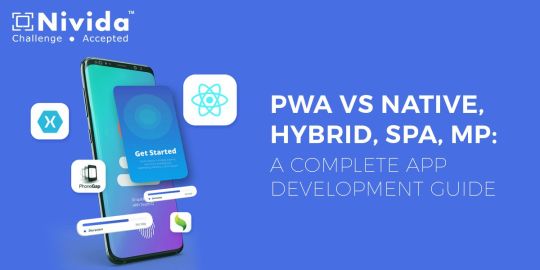
Progressive Web Apps (PWAs):
PWAs are web applications that are designed to look and function like native mobile apps. They are built using web technologies such as HTML, CSS, and JavaScript and are accessible through a web browser. PWAs are highly responsive, installable, and can work offline, making them an excellent choice for businesses looking to reach a wider audience across multiple platforms. Additionally, PWAs can be easily updated without requiring users to download new versions.
Native Apps:
Native apps are developed for specific platforms like iOS or Android using platform-specific languages (Swift or Objective-C for iOS, Java or Kotlin for Android). They offer the best performance, user experience, and access to device-specific features like camera, GPS, and push notifications. However, developing native apps requires separate codebases for different platforms, resulting in higher development costs and longer development cycles.
Hybrid Apps:
Hybrid apps are a combination of web and native apps. They are built using web technologies like HTML, CSS, and JavaScript and are wrapped in a native shell that enables them to be distributed through app stores. Hybrid apps provide a balance between cost-effectiveness and access to native features. However, they may not deliver the same performance as native apps, and certain device-specific functionalities might be limited.
Single-Page Applications (SPAs):
SPAs are web applications that load a single HTML page and dynamically update the content as users interact with the app. They offer a seamless user experience similar to native apps and can be accessed through web browsers. SPAs are easier to develop and maintain compared to native apps, but they may not provide the same level of performance and access to device features.
Multi-Platform Apps (MP):
Multi-platform apps are developed using cross-platform frameworks like React Native, Flutter, or Xamarin. These frameworks allow developers to write code once and deploy it across multiple platforms, saving time and effort. Multi-platform apps can achieve near-native performance and provide access to device features, making them a popular choice for businesses targeting multiple platforms.
When considering app development companies in India or Gujarat, it's essential to find a partner that understands your specific requirements and has expertise in the chosen development approach. Android App development companies in India and Gujarat offer a wide range of services, including native app development, hybrid app development, and PWA development. Similarly, Mobile App development companies in India and Gujarat can provide expertise in developing SPAs and MP apps.
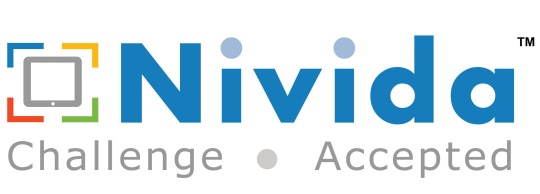
Before choosing an app development approach, consider factors such as budget, target audience, performance requirements, and time-to-market. Each approach has its own pros and cons, and the decision should align with your business goals and objectives. Consulting with a reputable app development company, Nivida Web Solutions Private Limited can help you navigate through these choices and make the right decision for your business.
In conclusion, the choice between PWAs, Native apps, Hybrid apps, SPAs, and MP apps depends on various factors such as performance, cost, development time, and target audience. Each approach has its own merits, and it's important to evaluate them based on your specific needs when selecting an app development company in India.
#eCommerce development company in India#eCommerce development Companies in Gujarat#Mobile App development Companies in India#Mobile App development company in Gujarat#Android App development Companies in India#Android App development company in Gujarat#Digital Marketing company in India
6 notes
·
View notes
Text
Full Stack Development Course: Roadmap, Skills, and Job Opportunities
In today's digital era, businesses are constantly seeking tech professionals who can build and manage complete web applications independently. This is where Full Stack Development shines. With the demand for full stack developers on the rise, now is the perfect time to enroll in a Full Stack Development Course and kickstart a career in one of the most versatile roles in the IT industry.
If you're looking for the best place to learn, Be-Practical, an educational and training organization based in Bangalore, offers a comprehensive full stack developer course in Bangalore that combines industry-relevant skills with practical learning and guaranteed placement support.
In this blog, we’ll explore the roadmap to becoming a full stack developer, the key skills you’ll gain, and the job opportunities available after completing a full stack development course in Bangalore.

📍 What is Full Stack Development?
Full stack development refers to the process of developing both the front-end (client side) and back-end (server side) of web applications. A Full Stack Developer is a professional capable of handling the entire application development process—from user interface design to server and database management.
Given the dynamic nature of web technologies, companies prefer hiring full stack developers who can manage end-to-end projects with minimal dependency.
🎓 Why Choose Be-Practical?
Be-Practical is a trusted name in IT education and training, especially in the domain of full stack development course in Bangalore. With an emphasis on hands-on learning, real-time projects, and industry mentorship, Be-Practical prepares students to meet real-world development challenges head-on.
Their full stack developer course in Bangalore with placement offers dedicated career guidance, resume building sessions, and mock interviews to ensure you're fully prepared to land your dream job.
🛣️ Full Stack Development Course Roadmap
A well-structured Full Stack Development Course is typically divided into three main layers:
1. Front-End Development
You’ll begin by learning how to build user interfaces using:
HTML5 & CSS3 – For structuring and styling web content.
JavaScript – The programming language that powers interactivity.
React.js or Angular – For building responsive, single-page applications (SPAs).
The full stack developer course at Be-Practical ensures you master these tools to design seamless, responsive websites that provide a rich user experience.
2. Back-End Development
Next, you’ll explore the server side of web development, including:
Node.js & Express.js – Popular technologies for building scalable server-side applications.
Java or Python (optional) – Additional languages used by many enterprise-grade applications.
REST APIs – For client-server communication.
The full stack development course in Bangalore by Be-Practical offers practical training in server-side logic, database integration, and session handling.
3. Database Management
Databases are crucial for any application. You’ll learn how to:
Design and manage SQL databases (MySQL, PostgreSQL)
Work with NoSQL databases like MongoDB
Integrate databases with front-end and back-end using full stack frameworks
4. DevOps & Deployment
Be-Practical’s full stack developer course in Bangalore with placement also covers deployment fundamentals:
Version control with Git & GitHub
Hosting applications using Heroku, Netlify, or AWS
Introduction to CI/CD pipelines and cloud environments
This makes you job-ready and confident in deploying real-world projects to live environments.
🧠 Essential Skills You’ll Learn
By the end of your Full Stack Development Course, you’ll have hands-on experience with the following:
Writing clean, efficient HTML, CSS, and JavaScript code
Creating dynamic front-end applications with React
Building scalable back-end APIs using Node.js and Express
Managing relational and non-relational databases
Using Git and GitHub for version control and collaboration
Deploying full stack projects in cloud environments
Debugging and testing applications
Soft skills like communication, teamwork, and problem-solving
These skills are taught through project-based learning at Be-Practical, ensuring you apply everything you learn in real-time scenarios.
��� Career and Job Opportunities
The demand for full stack developers is booming across India and globally. After completing a full stack developer course, you can explore roles such as:
Full Stack Developer
Web Developer
Front-End Developer
Back-End Developer
Software Engineer
UI/UX Developer
Application Developer
Top tech companies, startups, and MNCs are actively hiring professionals who can manage entire application life cycles. According to job market reports, full stack developers in India earn between ₹4 LPA to ₹15 LPA based on experience and skill level.
Be-Practical’s full stack developer course in Bangalore with placement ensures you don’t just learn the skills—you get placed in the right job with the right package.
📍 Why a Full Stack Developer Course in Bangalore?
Bangalore is India’s tech hub, home to thousands of IT companies, startups, and R&D centers. Choosing a full stack development course in Bangalore puts you in proximity to top employers and opens up numerous networking and internship opportunities.
Be-Practical’s industry partnerships and local employer connections make it one of the best places to take a full stack developer course in Bangalore and get placed quickly.
🎯 Final Thoughts
Whether you’re a student, a working professional looking for a career switch, or someone seeking a high-paying job in IT, a Full Stack Development Course is your ticket to long-term success.
Be-Practical offers one of the most comprehensive and job-focused full stack developer course in Bangalore with placement, equipping you with technical skills, soft skills, and industry exposure.
Start your journey today with Be-Practical and become a confident, competent full stack developer ready to take on the digital world.
0 notes
Text
How to Start Blogging in India: A Complete Guide for Beginners
In the digital age, blogging has evolved into a powerful tool for sharing knowledge, building a brand, and even earning a sustainable income. For aspiring writers and entrepreneurs wondering how to start blogging in India, this article will provide a simple yet effective roadmap to get started.
1. Choose Your Niche
The first step is choosing a niche that aligns with your interests and has a good audience. Popular blogging niches in India include travel, tech, fashion, finance, health, education, and lifestyle. A focused niche helps you stand out and build authority.
2. Pick a Blogging Platform
To start blogging, you need a platform. WordPress.org is the most popular and flexible choice for professional blogging. It requires purchasing a domain and hosting plan, but it gives you full control. Other options include Blogger, Wix, and Medium for beginners who want to start without investing money initially.
3. Buy a Domain and Hosting
Choose a domain name that reflects your blog’s topic and is easy to remember. Hosting services like Bluehost, Hostinger, and SiteGround offer affordable plans suitable for Indian bloggers. Make sure the host provides fast speeds and good customer support.
4. Set Up Your Blog
Once hosting and domain are set, install WordPress (most hosts offer one-click installation). Choose a clean, responsive theme. Customize it with your logo, color scheme, and essential plugins like Yoast SEO, Jetpack, and Google Analytics.
5. Create Quality Content
Content is king. Start writing high-quality, original posts that solve problems or provide value to readers. Use keywords wisely to optimize your content for search engines (SEO). Create a content calendar and stay consistent with publishing.
6. Promote Your Blog
Use social media platforms like Instagram, Twitter, LinkedIn, and Facebook to share your posts. Join blogging communities and forums to network and gain visibility. Email marketing can also help build a loyal reader base.
7. Monetize Your Blog
Once you gain traffic, you can monetize your blog through ads (Google AdSense), affiliate marketing, sponsored posts, or selling digital products like eBooks and courses.
Alternatively, if you're more interested in building websites than writing, consider exploring the web development roadmap. It starts with learning HTML, CSS, and JavaScript, and moves into frameworks like React or backend skills like Node.js and databases. Web development is also a great skill to complement blogging, especially if you want full control over your site’s design and performance.
Final Thoughts
Starting a blog in India is easier than ever, thanks to accessible tools and a growing online audience. Whether your goal is to share your story, educate others, or build a business, now is the perfect time to start. Just stay consistent, keep learning, and adapt to feedback—and success will follow.
0 notes
Text
Top Picks for the Best Courses for Front-End Development in 2025

In the age of digital-first experiences, the way users interact with apps and websites has never been more important. Companies, from tech startups to global enterprises, are constantly on the lookout for skilled front-end developers who can turn creative designs into functional, engaging interfaces.
If you're planning to enter tech or transition within it, enrolling in one of the best courses for front end development can set the foundation for a rewarding and future-proof career.
Let’s break down what front-end development entails, what skills you'll need, and which front end developer best courses can get you there in 2025.
What Does a Front-End Developer Do?
Front-end developers are the bridge between design and technology. They take static mockups and breathe life into them using code, ensuring websites and apps are not just visually appealing but also interactive, accessible, and responsive.
Key responsibilities include:
Converting UI/UX designs into code
Ensuring responsiveness across devices
Improving page load speed and user interactions
Debugging and maintaining front-end functionality
Collaborating with back-end teams and designers
To excel in this role, you’ll need to master a suite of tools and technologies.
Skills You’ll Learn in a Front-End Development Course
A good front end developer best course will teach you:
HTML, CSS, and JavaScript – The core building blocks
Responsive Design – Using media queries and frameworks like Bootstrap
JavaScript Frameworks – Such as React, Angular, or Vue.js
Version Control – Using Git and GitHub
APIs – Integrating with RESTful services
Testing Tools – Like Jest or Cypress
Dev Tools – Chrome DevTools, Postman, VS Code
More advanced programs also introduce deployment techniques, performance optimization, and accessibility best practices.
Why Take a Front-End Development Course?
With self-learning resources widely available, many wonder: why invest in a course?
Here’s why a structured program still matters:
Learning Path: Courses guide you from basics to advanced topics in a logical order
Project Work: Build real-world applications for your portfolio
Mentorship: Resolve doubts and get code reviews from experienced developers
Career Services: Resume help, mock interviews, and job connections
Consistency: Learn without getting overwhelmed by scattered resources
Top Platforms Offering the Best Courses for Front End Development
Here’s a curated list of the most career-oriented and practical learning options available in 2025.
1. NIIT Digital – Full Stack Product Engineering Program (Front-End Focus)
While designed as a full stack course, NIIT Digital’s program provides a robust front-end foundation ideal for beginners and upskillers alike.
Why it stands out:
Covers HTML, CSS, JavaScript, React, Git
Includes live mentor-led sessions and hands-on projects
Offers access to capstone projects and job support
Flexible learning schedules with a job-readiness focus
Aligned with the latest hiring trends in India
For those serious about entering the job market quickly, NIIT Digital provides one of the best courses for front end development with practical skills and support systems in place.
2. freeCodeCamp – Front End Development Certification
A great option for self-learners, this course covers:
Responsive web design
JavaScript algorithms
Front-end libraries like React
Projects to earn certification
3. Coursera – Meta Front-End Developer Certificate
Offered in partnership with Meta (Facebook), this program teaches:
HTML, CSS, JavaScript
React and UX principles
Front-end testing and final project
Industry-grade training with flexible timelines
4. Udemy – The Complete Front-End Web Developer Bootcamp
Popular for affordability, this includes:
30+ hours of on-demand video
Real-world exercises
Lifetime access
While less structured, it's a good option for budget-conscious learners looking to experiment.
How to Choose the Right Course for You
Here’s a quick checklist to help you select the front end developer best course for your goals:
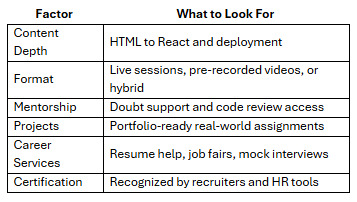
Platforms like NIIT Digital score high across all these criteria, especially for learners who value guided instruction and career support.
Career Outcomes After Front-End Courses
Once you’ve completed a front-end course, you’ll be ready to apply for roles like:
Front-End Developer
UI Developer
Web Developer
React Developer
Junior Software Engineer
Final Thoughts
Becoming a front-end developer in 2025 is not just about learning to code—it’s about learning to create digital experiences. A high-quality program gives you the edge to stand out in a crowded job market.
Whether you’re just starting out or reskilling mid-career, investing in one of the best courses for front end development can accelerate your growth and job readiness.
Platforms like NIIT Digital bring together structure, community, and mentorship—all essential ingredients for success in tech. Choose a course that doesn’t just teach you to build web pages—but to build a career.
0 notes
Text
Top Web Development Tools You Need to Know for Building Modern Websites

In the digital era, having a strong online presence is a necessity for businesses of all sizes. From user-friendly websites to high-performance e-commerce platforms, web development plays a crucial role in defining how brands engage with their audience. If you're considering building or revamping a website, understanding the tools used in modern web development can provide clarity and confidence in the process. For businesses seeking a professional edge, partnering with a reliable Web Development Company in Oman can significantly streamline the journey.
In this blog, we’ll explore the most effective web development tools available today, offering insights into how they can elevate your website. These tools are instrumental in crafting responsive, fast, secure, and visually compelling sites that meet modern standards.
1. Code Editors
A code editor is the foundation of web development. It allows developers to write, test, and manage code efficiently. While there are many editors available, the most popular ones are known for their speed, customizability, and built-in features like syntax highlighting, code completion, and version control support.
For businesses working with a Web Development Company in Oman, you can expect that professional developers utilise industry-standard code editors to ensure your project runs smoothly and is easy to maintain.
2. Version Control Systems (VCS)
Version control tools are essential for managing code changes, especially in team environments. They allow developers to track modifications, collaborate seamlessly, and roll back to previous versions if something goes wrong.
Using a VCS ensures that your website development process is organised, efficient, and secure. Reputable development companies in Oman employ these tools to manage projects methodically, reducing the risk of errors during deployment.
3. Frameworks and Libraries
Modern web development relies heavily on frameworks and libraries to speed up the development process. These tools provide pre-written code and components, making it easier to build robust applications quickly.
Some of the key benefits include:
Reducing repetitive coding tasks
Promoting code reusability
Enhancing scalability
A professional Web Development Company in Oman will evaluate your project needs and select the appropriate frameworks to deliver a tailored solution.
4. Front-End Development Tools
Front-end tools are responsible for creating the visual components of your website — the parts users interact with. These tools focus on enhancing user experience (UX) and interface (UI) design.
Key tools include:
Responsive design frameworks
CSS preprocessors
JavaScript libraries
Browser developer tools
With consumer behaviour increasingly driven by mobile usage, front-end responsiveness is a priority. Developers in Oman are well-versed in implementing these tools to ensure websites look and function perfectly across all devices.
5. Back-End Development Tools
While front-end tools manage what users see, back-end tools handle the logic, database interactions, and server-side functionality.
Common back-end tools help developers:
Connect databases
Handle user authentication
Manage APIs
Perform data processing
A dependable Web Development Company in Oman will combine robust back-end technologies with front-end frameworks to build seamless, secure, and powerful web applications.
6. Content Management Systems (CMS)
Content Management Systems allow users to manage and update website content without needing to write code. CMS platforms are ideal for businesses that need flexibility and control over their website’s content, such as blogs, news portals, or company updates.
Oman-based web development firms often provide CMS integration as part of their services, empowering clients to manage their content effectively post-launch.
7. Web Performance and Testing Tools
The speed and performance of a website are crucial for ensuring user satisfaction and improving SEO rankings. Development tools that help in performance optimisation and testing include:
Page speed analysers
Load testing tools
Browser compatibility checkers
Security scanners
A competent Web Development Company in Oman will run comprehensive tests on your site to ensure it loads quickly, functions smoothly, and is secure against vulnerabilities.
8. SEO Tools
SEO (Search Engine Optimization) is fundamental for driving organic traffic to your website. Developers use SEO tools to:
Optimise meta tags and headers
Ensure clean and crawlable site structures
Integrate schema markup
Monitor website analytics
Partnering with a company in Oman that understands technical SEO integration during the development stage can give your business a significant competitive advantage.
9. Website Builders and Prototyping Tools
Prototyping tools allow businesses and developers to visualise a website layout before diving into full-scale development. They’re also useful for gathering client feedback early in the process, reducing rework.
A forward-thinking Web Development Company in Oman will often start projects with wireframes or prototypes to align the design with business goals before development begins.
10. Deployment and Hosting Tools
Deployment tools automate the process of launching websites and applications, ensuring smooth and error-free releases. Hosting platforms offer the server infrastructure needed for your site to go live and stay operational.
Experienced developers in Oman utilise reliable deployment practices to manage updates, backups, and server configurations, giving clients peace of mind after their website launches.
Conclusion
Building a modern website involves much more than just design. It requires the right mix of tools, technologies, and expertise to ensure that the result is responsive, secure, SEO-optimised, and aligned with your business objectives.
By choosing a skilled Web Development Company in Oman, you gain access to professionals who understand the latest tools in the industry and how to apply them strategically. Whether you’re creating a simple business site, a complex e-commerce platform, or a scalable web app, these tools help streamline the process and ensure success.
Let your website reflect the quality, professionalism, and innovation your brand represents. With the right tools and the right development team, your digital vision can become a powerful reality.
#Web Development Company in Oman#Web Design in Oman#Website Development Oman#Digital Marketing Oman#Ecommerce Website Development Oman#Mobile App Development Oman#Web Designing in Oman#Web Design Company Oman#Web Design Agency in Oman#Web Development in Oman#Website Designing Company in muscat#Ecommerce Website Development Company Muscat#Ecommerce Website Development Services Muscat#Website Development Company Oman#Digital Marketing Company in Oman#Digital Marketing Agency Oman#Social Media Management Oman#Social Media Management Service in Oman#Social Media Management Agency in Oman#Social Media Marketing in Oman#Social Media Marketing Agency Oman#Social Media Marketing Services Oman#Social Media Marketing Company Oman#Social Media Agency Oman#Ecommerce Web Solutions Oman#Ecommerce Solutions Oman#Ecommerce Development Muscat#Ecommerce Development Company Muscat#Ecommerce Development Services Oman#Ecommerce Development Agency in Oman
0 notes
Text
Top Programming Languages to Learn During BCA
The Bachelor of Computer Applications (BCA) is more than just a degree—it's your launchpad into the world of technology. If you're pursuing or planning to pursue BCA, you’re already on a smart path. But to truly stand out in today’s competitive tech landscape, knowing the right programming languages can make all the difference.

Let’s explore some of the must-learn programming languages during your BCA journey, whether you're in your first year or looking to skill up before placements.
1. Python – The Beginner's Best Friend
Python is often the first language taught at most reputed computer colleges for a reason—it's simple, powerful, and versatile. From web development to data science and artificial intelligence, Python is everywhere.
Why learn it? Easy syntax, huge community, tons of real-world applications.
Where it's used: AI, machine learning, automation, web apps.
Most tech-savvy campuses ensure students get hands-on Python experience in their early semesters.
2. Java – For Building Real-World Applications
Java is a classic language that powers countless enterprise applications and Android apps. Many universities emphasize Java due to its strong presence in the job market.
Why learn it? Object-oriented, platform-independent, in-demand.
Where it's used: Mobile development, banking software, web backends.
Students from institutions with a strong industry connection often get early exposure to Java through internships and live projects.
3. C and C++ – The Foundations of Programming
These are the languages where programming really began. While they might seem old-school, understanding C and C++ helps you think like a programmer and understand how computers work at a deeper level.
Why learn it? Improves logic building, system-level understanding.
Where it's used: Game development, operating systems, embedded systems.
Colleges that focus on building a strong technical foundation often introduce these languages early on.
4. JavaScript – The Language of the Web
If you're interested in web development, JavaScript is a must. It brings websites to life and is a key part of the front-end development trio: HTML, CSS, and JS.
Why learn it? Essential for web development, huge job market.
Where it's used: Websites, mobile apps (using frameworks like React Native).
In tech-forward academic environments, students often work on real-time web development projects that include JavaScript and modern frameworks.
5. SQL – The Language of Databases
Every software uses data. And SQL is the tool used to store, access, and manage that data. Whether you become a developer, analyst, or data scientist, SQL will be part of your toolkit.
Why learn it? Crucial for handling data, required in many job roles.
Where it's used: Databases, data analysis, backend development.
Educational institutions that prepare students for tech industry roles make sure database management is a part of the curriculum.
6. PHP – Still Relevant in Web Development
Despite newer frameworks, PHP remains a popular language for server-side web development, especially for content-heavy websites.
Why learn it? Widely used for building dynamic websites.
Where it's used: Web development, CMS (like WordPress).
Campuses offering full-stack development exposure often include PHP in their training.
Bonus Tip: Learn Version Control (Git)
While it’s not a programming language, knowing Git and GitHub will help you collaborate better, especially during internships or team projects.
Conclusion
Choosing the right programming languages to learn during BCA can open many doors. From academic excellence to career opportunities, mastering languages like Python, Java, and SQL can give you a strong edge.
And remember, the environment you study in also matters. Learning these languages becomes easier and more effective when you're surrounded by experienced mentors, real-world projects, and industry exposure. That’s why many students prefer institutions known for strong computer science programs and tech-focused learning. Some of the most dynamic campuses are located in educational hubs like Bangalore, where the blend of academia and industry gives students a clear advantage.
So, start learning, stay consistent, and by the time you finish your BCA, you'll be more than just job-ready—you’ll be future-ready.
0 notes
Text
Learning Full Stack Development: A Journey from Frontend to Backend
In the ever evolving world of technology, full stack development has emerged as one of the most in demand and versatile skill sets in the software industry. Whether you're a beginner stepping into the coding universe or an experienced developer looking to broaden your horizon, learning Full Stack Development Online can be a game changer. This blog post will guide you through what it means to be a full stack developer, why it's valuable, and how to start your journey effectively.

What is Full Stack Development?
Full stack development refers to the ability to work on both the frontend (client-side) and backend (server-side) of a web application. A full stack developer is someone who can manage the entire development process from designing user interfaces to handling databases and server logic.
Frontend: Everything the user interacts with HTML, CSS, JavaScript, frameworks like React or Angular.
Backend: Everything behind the scenes server logic, databases, APIs, and authentication using languages like Node.js, Python, Java, or PHP.
Why Learn Full Stack Development?
High Demand: Companies value developers who can handle multiple aspects of development.
Better Problem Solving: Understanding both sides helps you debug and improve applications more efficiently.
More Opportunities: Freelancing, startups, or product building all benefit from full stack skills.
Autonomy: Build complete apps by yourself without relying on multiple specialists.
Higher Earning Potential: Multi-skilled developers often command higher salaries.
Skills You Need to Master
Here’s a breakdown of core skills needed for a full stack developer to study in a well reputed Software Training Institutes:
Frontend:
HTML, CSS, JavaScript: The building blocks of any website.
Frameworks: React.js, Vue.js, or Angular.
Responsive Design: Making websites mobile-friendly using CSS frameworks like Bootstrap or Tailwind CSS.
Backend:
Languages: Node.js, Python (Django/Flask), Ruby, Java, or PHP.
Databases: MySQL, PostgreSQL, MongoDB.
APIs: RESTful and GraphQL.
Authentication & Security: JWT, OAuth, HTTPS.
Tools & Platforms:
Version Control: Git and GitHub.
Deployment: Heroku, Vercel, Netlify, AWS, or Digital Ocean.
CI/CD & Testing: Basic knowledge of pipelines and automated testing.
How to Start Learning Full Stack Development

Pick a Language Stack: For beginners, the MERN stack (MongoDB, Express, React, Node.js) is a popular and well-supported option.
Follow a Roadmap: Stick to a structured learning plan. Many websites like roadmap.sh offer visual guides.
Build Projects: Start simple (to-do list, portfolio website) and gradually work on more complex applications like blogs, chat apps, or e-commerce platforms.
Use Online Resources: Leverage free and paid courses on platforms like free Code Camp, Udemy, Coursera, and YouTube.
Join Communities: Participate in developer communities on GitHub, Reddit, or Discord to get feedback and stay motivated.
Tips for Staying on Track
Be patient: Full stack development takes time. Don’t rush.
Practice consistently: Code every day, even for a short time.
Document your journey: Start a blog or GitHub repo to share your progress and projects.
Stay updated: Web development technologies evolve. Follow tech blogs, newsletters, and changelogs.
Final Thoughts
Learning full stack development is an investment in your future as a developer. It empowers you to understand the bigger picture of software development and opens doors to a wide range of career opportunities. Start small, be consistent, and enjoy the process before you know it, you'll be building fully functional web apps from scratch.
0 notes
Text
Top Tools and Technologies to Use in a Hackathon for Faster, Smarter Development
Participating in a hackathon like those organized by Hack4Purpose demands speed, creativity, and technical prowess. With only limited time to build a working prototype, using the right tools and technologies can give your team a significant edge.
Here’s a rundown of some of the best tools and technologies to help you hack efficiently and effectively.
1. Code Editors and IDEs
Fast coding starts with a powerful code editor or Integrated Development Environment (IDE).
Popular choices include:
Visual Studio Code: Lightweight, extensible, supports many languages
JetBrains IntelliJ IDEA / PyCharm: Great for Java, Python, and more
Sublime Text: Fast and minimalistic with essential features
Choose what suits your language and style.
2. Version Control Systems
Collaborate smoothly using version control tools like:
Git: The most widely used system
GitHub / GitLab / Bitbucket: Platforms to host your repositories, manage issues, and review code
Regular commits and branch management help avoid conflicts.
3. Cloud Platforms and APIs
Leverage cloud services for backend, databases, or hosting without setup hassle:
AWS / Azure / Google Cloud: Often provide free credits during hackathons
Firebase: Real-time database and authentication made easy
Heroku: Simple app deployment platform
Explore public APIs to add extra features like maps, payment gateways, or AI capabilities.
4. Frontend Frameworks and Libraries
Speed up UI development with popular frameworks:
React / Vue.js / Angular: For dynamic, responsive web apps
Bootstrap / Tailwind CSS: Ready-to-use styling frameworks
These tools help build polished interfaces quickly.
5. Mobile App Development Tools
If building mobile apps, consider:
Flutter: Cross-platform, single codebase for iOS and Android
React Native: Popular JavaScript framework for mobile
Android Studio / Xcode: Native development environments
6. Collaboration and Communication Tools
Keep your team synchronized with:
Slack / Discord: Instant messaging and voice/video calls
Trello / Asana: Task and project management boards
Google Docs / Notion: Real-time document collaboration
Effective communication is key under time pressure.
7. Design and Prototyping Tools
Create UI/UX mockups and wireframes using:
Figma: Collaborative design tool with real-time editing
Adobe XD: Comprehensive UI/UX design software
Canva: Simple graphic design tool for quick visuals
Good design impresses judges and users alike.
8. Automation and Deployment
Save time with automation tools:
GitHub Actions / CircleCI: Automate builds and tests
Docker: Containerize applications for consistent environments
Quick deployment lets you demo your project confidently.
Final Thoughts
Selecting the right tools and technologies is crucial for success at a hackathon. The perfect mix depends on your project goals, team skills, and the hackathon theme.
If you’re ready to put these tools into practice, check out upcoming hackathons at Hack4Purpose and start building your dream project!
0 notes